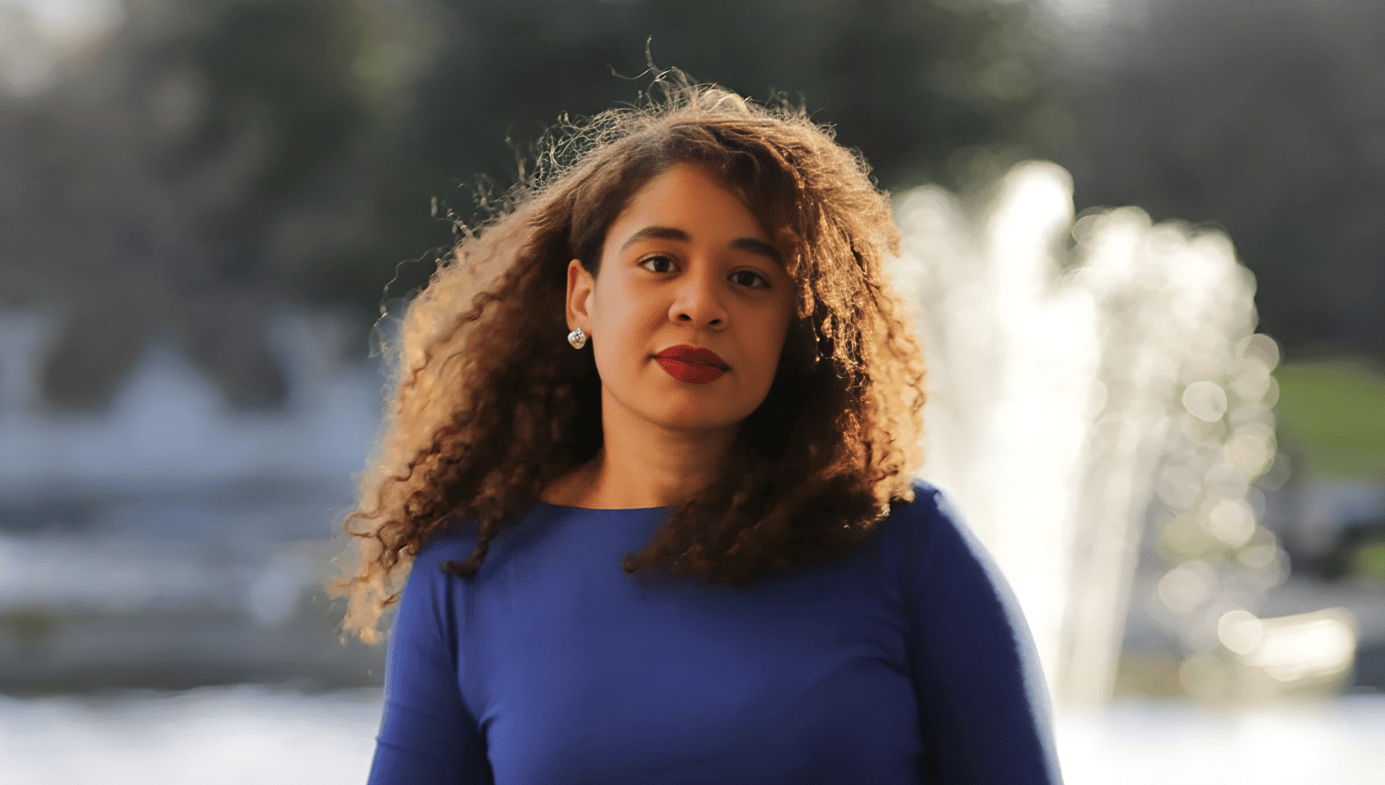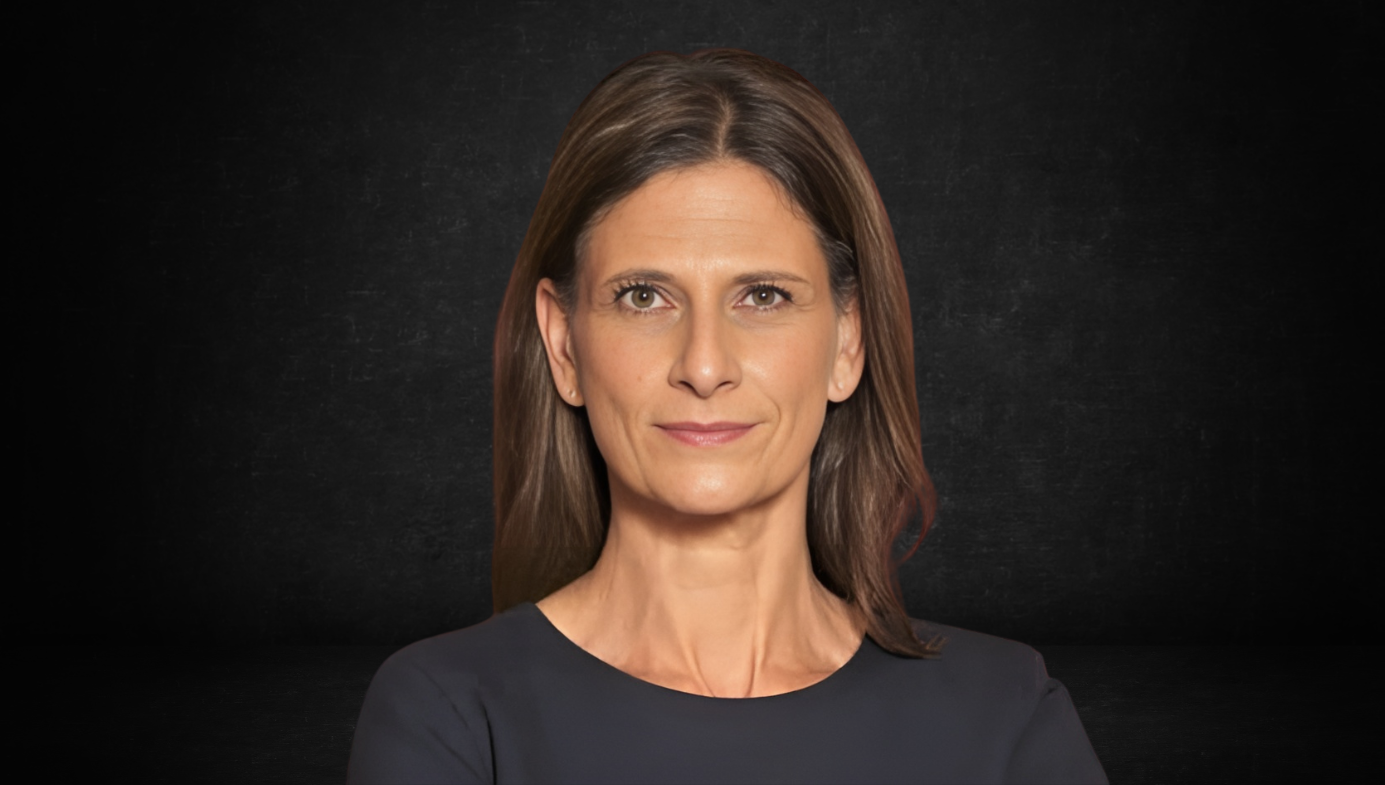Ordeal by Title IX
This approach has been greeted with hostility by many colleagues. This is understandable, for it challenges humanists to climb down from the ivory tower and make their research directly relevant to the public.

I
I missed the call. But the fact that it had been made on a Saturday morning—September 29th, 2018—was cause for concern. Why was the dean, who never phoned me, calling on a weekend? When I rang back his voice was tense. He informed me that he was removing me from my classes “effective immediately.” I was told to expect an email informing me of this decision. I was no longer allowed on campus. Nor was I permitted to contact any member of the faculty, staff, or students, “on pain of termination.” No reason was given for any of this. Nor was I given a chance to defend myself.
Twelve days earlier I had received a letter from the University stating that I was the subject of a Title IX investigation. The letter said that an inquiry had been opened in June, prompted by an anonymous complaint concerning two departments on campus, one of which was mine. That inquiry uncovered an allegation that I had sexually harassed a graduate student in 2006. No information was given about the source or content of this allegation. The letter, dated September 17th, said nothing about disciplinary action. What had changed between then and my sudden removal on the 29th? The email that arrived later that day provided no explanation.
I’ve never discovered what prompted my sudden eviction from campus. There was, however, one notable intervening event—on September 27th, Brett Kavanaugh and Christine Blasey Ford both testified before the Senate Judiciary Committee and the country was in uproar about sexual assault. I subsequently learned that the chair of my department had been pulled out of a bar late on the afternoon of Friday the 28th for an emergency meeting to sign the paperwork for my removal.
Yanked from classes, barred from campus, and disallowed from contacting anyone at my university except the dean—who would not talk to me either. At some point I would be contacted by an outside law firm that had been retained to investigate me. Until then, silence. I was told that the investigation would take some 40 days. Instead, I was propelled upon a 14-month odyssey. In the end, I—a tenured full professor, a former departmental chair of philosophy, and the founding director of a million-dollar university center on campus, was forced to resign under threat of termination—even though I was cleared of the Title IX charges.
The following offers a narrative of my Title IX experience. The process was shambolic, dishonest, and lacked accountability. Rules were applied without explanation and then changed without warning. Every step of the proceedings—including that first letter of September 17th—was filled with distortions. The allegations changed over time to fit a predetermined end. I was kept in the dark about the charges and the investigation for months. And the safeguards I thought would offer protection, of due process and unbiased inquiry (not to mention tenure), were swept away.
My personal travails aren’t the worst of it. Title IX was changed in 2011 in order to address a history of sexual misconduct within universities. But in seeking to right this wrong, Title IX opened the door to manipulation by zealots and exploitation by opportunists who cow colleagues who do not wish to appear lax about sexual misconduct. The results have been dismal. Not only have women as well as men been caught up in sham proceedings, but the progress for women that Title IX had once prompted has been undermined, as male professors refuse opportunities for mentoring and collaboration, fearing a Title IX charge out of the blue.
This is not, then, only a tale of one person entangled in the morass of Title IX. An entire system of checks and balances has gone off the rails. And note that this did not happen at an organization that uses rationality as a means to some other end such as selling a product. It happened within the university, the institution dedicated to rational thought and evidential reasoning. And it transpired within philosophy, the field dedicated to truth and justice.
II
Title IX was once known for its connection to sports—there’s even a women’s sports apparel company that goes by the name. But its import is much wider. Title IX prohibits discrimination on the basis of gender in higher education. The Civil Rights Act of 1964 had ended discrimination on the basis of race, color, religion, sex, or national origin in employment and public accommodation, but it did not prohibit sex discrimination against persons at educational institutions. After lobbying from women’s rights groups, the Education Amendments Act of 1972 fixed this.
In 2011, Title IX changed when the Department of Education’s Office for Civil Rights issued a Dear Colleague Letter which called on colleges to take sexual harassment and assault more seriously. It offered recommendations for how schools should treat sexual assault claims. Schools had a “responsibility to take immediate and effective steps to end sexual harassment and sexual violence.” Sexual misconduct was no longer seen as the work of a few bad actors but rather the systemic production of “rape culture.” These recommendations came with a threat: Schools that failed to uphold the new standards risked the loss of federal funding and the shame of appearing on a federal blacklist. More often, schools were subjected to compliance reviews that cost hundreds of thousands of dollars in staff hours and attorney fees.
Schools responded by seeking to demonstrate that they took sexual assault seriously. Title IX offices were created on campuses and evidentiary standards were revised. Unlike the standard used in criminal trials, which requires certainty beyond a reasonable doubt, or in civil trials, which apply the lesser standard of clear and convincing evidence in order to be convicted, the standard now became even weaker—“a preponderance of the evidence,” sometimes described as “50 percent plus a feather.”
What’s more, the due process rights of the accused were suspended. Anonymous denunciations were sufficient to launch an investigation. The accused had no right to see the details of the charges laid against him or her. Nor was there anything like a process of “discovery,” during which each party is able to see the evidence possessed by the other. In my case, not only was I not permitted to cross-examine my accuser, I was eventually informed that there was no accuser, a nonsensical claim eventually disproved by the documentation I received when my ordeal was over. My anonymous accusers did not even include the person I was supposed to have harassed. And when she was interviewed during the course of the investigation she denied that I had ever harassed her.
The changes prompted by the 2011 Dear Colleague letter dovetailed with a larger set of trends. Tenure-track positions have been in decline for the last 50 years, dropping from three-quarters to a quarter of faculty positions nationwide. This has been matched by the growth of lecturer and adjunct positions. The latter are obviously in a more vulnerable position vis-à-vis the administration, but as we will see, the loss of faculty prerogatives has spread to tenure-track faculty as well.
The Dear Colleague letter also marked a shift within feminism. Laura Kipnis, a feminist professor of media studies at Northwestern University, found herself the subject of a Title IX investigation in 2015 after she wrote a widely discussed essay for the Chronicle of Higher Education entitled “Sexual Paranoia Strikes Academe.” In a subsequent book about Title IX abuses entitled Unwanted Advances, Kipnis said this about the rise of the new paternalism:
A crush on a professor used to be the most ordinary thing in the world. Now, at least in public discourse, Eros runs strictly in the opposite direction: predatory professors foisting themselves on innocent and unwilling students, who lack any desires of their own.
The agency that women had fought for—the entirely reasonable demand that they be treated as adults capable of mature decisions—was now displaced by a focus on asymmetries in power. These power relations now only ran in one direction, as women were positioned as victims.
The Trump administration has since rolled back the procedures mandated by the 2011 letter. As a 2017 New York Times Magazine cover story noted, incoming Secretary of Education Betsy DeVos had declared current Title IX policies a “failed system” of “kangaroo courts” and “weaponized” civil rights, and vowed that “the era of rule by letter is over.” Part of the explanation for DeVos’s interest in overturning the prevailing policies may have rested in the new administration’s desire to repudiate every element of the Obama years. Nevertheless, a number of liberals embraced the DeVos changes, including Ruth Bader Ginsburg, Harvard law professor Jeannie Suk Gersen, and Kipnis.
After years of deliberation, the Department of Education offered new protections for due process in Title IX proceedings in May of 2020. The new regulations define sexual harassment and sexual assault. They also require schools to respond equitably and promptly to sexual misconduct incidents. Under these rules the accused has the right to written notice of allegations, to an advisor, and the ability to submit, cross-examine, and challenge evidence at a hearing—all elements that my investigation lacked.
In late May, more than 100 members of the House of Representatives signed a letter to DeVos protesting the new Title IX guidelines; 36 senators and a number of governors signed on as well. Their letter complains that the new Title IX regulations “relies on and reinforces the false and toxic stereotype that survivors, particularly women and girls, tend to lie about sexual assault.” The signatories, in other words, rejected the presumption of innocence for the accused. As of this writing, the Title IX controversy remains open.
III
In retrospect, there were warning signs of what was to come. A year before my troubles began, my department met to discuss the two new faculty positions we were filling. Our chair opened the meeting by announcing that “we will be in deep shit if we don’t hire two women.” In response, I pointed out that we all agreed on the goal: greater faculty diversity would attract students and contribute to our departmental life. But that shouldn’t be our sole criteria. For one, only 27 percent of new PhDs in philosophy were women, and many places wanted to hire them. If two candidates were close in our evaluation, I suggested, we ought to hire the woman or person of color. But our central goal should be to hire the best candidates.
The looks around the room made it clear that these remarks had not been well received. Other attempts to introduce divergent viewpoints into discussions drew a similar response. It was announced that an upcoming departmental workshop on feminism would only be open to female faculty and students. Was this desirable? I asked. Or even legal? Would it be acceptable to hold a workshop that was limited to men?
Inconvenient inquiries like these have traditionally been central to the philosopher’s trade. Questioning ought to be non-denominational, and I ask equally pointed questions in conversation with liberals and conservatives, theists and atheists. My colleagues, however, now viewed matters differently. A growing list of issues was no longer open to debate, and my questions stamped me as a defender of repudiated points of view.
The department was becoming a less congenial place. But professors largely operate on their own, and I had a sabbatical coming up. We met as a group on only a couple of occasions in the fall of 2017, and I would be out of town for nine months beginning in December. Perhaps things would be better by the fall of 2018.
Seven months into my sabbatical, in June of 2018, I was contacted by the University Office of Equal Opportunity (OEO). Someone in the department had filed a sexual harassment complaint against me. Since I was out of town an interview would be conducted over the phone. I wasn’t allowed to see the complaint, but I was expected to answer a series of questions.
The interviewer began by asking if I had invited a newly hired departmental lecturer to a local coffee shop? Yes, I had. Why? To welcome her to the department, as senior people are supposed to do with new colleagues. The interviewer wanted to know if she had asked how she came to be hired in the department, and if I had replied “I have no idea.” Yes, I had. What had I meant by that statement? I told the interviewer what I had told her—that I hadn’t been on the search committee, or looked at the candidate’s files, and was not part of the deliberations. And some months later, had I asked this same lecturer for recommendations for readings in feminist approaches to film noir? I had. I was teaching a class in aesthetics and wanted feminist perspectives on Double Indemnity. She had recommended two and I had used one of them in class. The interviewer had nine such questions. Innocuous interactions were now fraught with innuendo. I recalled warnings from male colleagues that they would never invite a female colleague out for a cup of coffee, much less a beer, and how I had ridiculed their excessive caution.
I spent the summer awaiting the result of the investigation. It arrived in August—the OEO had reached a determination of “no violation.” Good news. Except the charge of sexual harassment was now a permanent part of my record. I would eventually learn that three such charges were part of my record, all of which had been filed within days of one another in late May about events in the even more distant past. I had not been contacted about the two other complaints. I only learned about them months later, after the law firm’s investigation was complete.
One of these complaints involved one of the new faculty members. She claimed that I had made her feel “potentially unsafe,” even though we had only met a couple of times, and then at faculty meetings. Her reason? A year and a half earlier, at the faculty dinner for her on-campus job interview, I had asked what her husband did for a living and how her parents were employed. The third complaint had been filed by a male colleague after another faculty member informed him of inappropriate conduct that was supposed to have occurred back in March of 2006. He told me later that he felt compelled to turn in a report lest he be fired for overlooking an allegation of sexual harassment.
Even though they were all dismissed, these three cases implied a pattern of harassment on my part. The other possible interpretation—that this was an organized campaign to damage my reputation for reasons that had nothing to do with sexual harassment—was not considered.
IV
I had only a month’s respite after the conclusion of the OEO investigation before receiving the September 17th Notice of Investigation. The Notice described “an anonymous complaint of sexual harassment by faculty members in the Department of Biological Sciences and the Department of Philosophy and Religion. Based on the investigation to date, you have been identified as a Respondent based upon an alleged inappropriate relationship with former graduate student beginning in approximately 2006.”
The Notice was incorrect. I received the original complaint, heavily redacted, in the spring after the investigation was over. It’s clear that this was at least largely a complaint against an individual. The redacted names are short, only allowing for a person’s name or pronoun (e.g., “he”) rather than the name of a department. And the details that are legible match details of my career.
The challenge I faced was to prove a negative from 12 years earlier when I did not even know the specifics of the charges. I would have no information about the allegations until being interviewed by the lawyers. During the six weeks until then I was unable to contact or reply to colleagues and students—leaving projects hanging, student questions ignored, and letters of recommendation unwritten. I was forbidden to even tell people that I could not communicate with them under threat of being fired.
I spent this time learning about Title IX. I found that I had no right to see the specifics of the charges. Nor would I be allowed to confront my accusers. I would walk into the October 30th interview blind and be asked questions on unknown subjects for an unknown amount of time. I would not have access to files in my office to check dates or refresh memories, opening myself to charges that I had lied. Finally, the university ombudsman position was empty and requests to the faculty senate for help—I dared that much contact—went unanswered.
I learned that my experiences were far from unique. Laura Kipnis, Nick Wolfinger, Sarah Viren and Marta Tecedor, and others had detailed how faculty across the nation have been swept up in arbitrary investigations that were ruining careers. I sought out legal representation. Even a city as large as mine had no lawyers specializing in Title IX law, so I hired a New York firm that had made the front cover of the New York Times Magazine and who had represented both students and faculty. The firm estimated that their representation would cost me $10,000. This was a significant amount, but I thought of it as insurance: The one thing I couldn’t afford was to lose my job. Their bill eventually totaled $27,000.
The October 30th interview with the university-hired law firm began with the two lawyers stating that they were simply seeking the truth. But this neutrality ended with the first question: Had I ever been charged with sexual misconduct in my time at previous universities? I had not, but how was this relevant to allegations concerning my time at this University? I was asked questions about my marriage: Did your wife know about your relationship with a graduate student? This was a complex question that assumed something that had not yet been established. I was interrogated about my entire professional life—relationships with colleagues, undergraduates, graduates, and staff, from the beginning of my career to that morning. This was not an interview. It was an inquisition.
Eventually the lawyers focused on my relationship with a particular graduate student. The outlines of the charges became apparent as they zeroed in on events in March of 2006 in another city. I was there to run a workshop that looked at environmental disasters from an interdisciplinary point of view. Thirty researchers from around the world had come in for three days of discussions. Our meetings ran nonstop from morning into the evening.
The grant included money for a research assistant to help with the logistics. One graduate student stood out in terms of interest; the majority of our graduate students in philosophy showed little interest in interdisciplinary research with scientists, engineers, and policymakers. The lawyers asked whether I had shared a hotel room with my assistant (no), and whether I had held hands with her during the meeting (no; in a professional meeting?). And I was asked whether I’d had a sexual relationship with the student while there. All of these allegations were false. But because I had not been informed of the allegations ahead of time, I wasn’t able to call upon workshop participants to attest to the fact that there had been no improper behavior on anyone’s part during the workshop.
The questions moved from March of 2006 into 2007 and beyond, after the student in question had graduated. They continued up through 2018. The interview lasted nearly two hours. I returned home to wait for the investigation to be completed.
On October 21st, 2018, nine days prior to my interview, I had written to the Title IX officer asking for the details of the allegations against me. I received no reply. I sent follow up requests on October 24th and 29th, November 27th, 28th, and 29th. No reply. On December 3rd, my attorney contacted the University’s General Counsel demanding a response. On December 6th, I finally received an answer: The University claimed there was no complainant:
The current investigation in which you are a Respondent was initiated by the University in response to information collected during the investigation of a separate matter. As such, there is no complainant, nor is there a specific person who identified you as a Respondent. Title IX requires postsecondary institutions to promptly investigate incidences of suspected sexual harassment. The University therefore initiated this investigation without a complainant.
Set to one side that this is an inaccurate account of the original (redacted) letter, which I would later discover had made specific claims about me. I was charged with sexual harassment, but no one was doing the charging, for there was no one claiming that they had been harassed. The investigation was generated by hearsay: Someone was claiming that someone else had been harassed by me 12 years earlier. I was removed from the classroom and campus and suffered irreparable professional harm on the basis of an anonymous surmise made about someone else’s experience more than a decade before.
V
I was told that the investigation would take approximately 40 days, but it took that long just to be interviewed by the University’s hired lawyers. I heard nothing in November. On December 6th, 75 days in, I was interviewed again. The investigation would not be completed until the end of February, 160 days from when I was first notified of its existence, and 265 days from its inception the previous June. The final resolution—my resignation—occurred in August of 2019, 14 months from the beginning of the investigation.
In the second interview (which was conducted over the phone), the lawyers broke little new ground. But I changed my approach. Previously, I had limited my answers to the time when Jane Doe was a graduate student. I now acknowledged a relationship with her that began in the fall of 2007, a year and a half after the workshop, and several months after she had finished her thesis, left town, and begun a PhD program in another state.
I hadn’t mentioned this earlier because my personal life was none of the University’s business. I revealed it now because I had discovered a letter in the depths of my Gmail account written by the 33-year-old Jane Doe to her parents in 2009. It described the history of our romantic relationship, which had begun at a conference in Canada in October of 2007. Her letter emphasized that there had been no romantic involvement with me during her time at the University. I sent the letter to the law firm, thinking it would settle matters. They contacted Jane Doe and she confirmed the contents of the letter.
My lawyers expected the investigation to conclude by the end of the fall semester. Instead, in mid-December the dean wrote that the investigation was still ongoing, and I would not be teaching in the spring. The taxpayers of the state were now paying me to stay out of the classroom for nearly an entire year on the basis of an anonymous rumor.
It was only by chance that I looked at my campus email account on the night of December 30th. That’s the least likely time to get an email from a university, since they shut down between Christmas and New Year’s. Nevertheless, at 5pm that evening an email arrived from the Title IX officer. The law firm had completed a draft report; I had until end of business on January 2nd, 2019 to say if I wanted to respond. The timing seemed chosen in the hope that I would miss the deadline.
Of course I wanted to respond. The Title IX officer said that I would have to come to her office to see the draft. I was out of town for the break. She refused to send me the draft, but after some haggling she said that the report would be made available to me on a secured website for 24 hours. I asked why I was not being given a copy of the draft, and why I had only a limited amount of time to review it. I was told that I was being belligerent. When I asked if the provost and other university officials would also be similarly constrained in their viewing the Title IX officer hung up on me.
In mid-January I was given access to the draft report. It was nine single-spaced pages. I used my phone to snap pictures of the document—since I was using a University computer, I feared that if I took screen shots the University would be able to tell. Now I had access to, if not the original charges, at least some of the evidence and a summary of the conclusions being drawn. This was when I learned of the two other complaints of late May 2018.
The draft hid identities by using locutions (e.g., “Faculty 10”), but I was able to identify the source of some of the allegations. I had invited just one of my departmental colleagues to the workshop, someone with whom I had difficult relations. In fact, the invitation was an attempt at rapprochement. Such efforts proved unsuccessful, and over the years the relationship had been fraught. The most recent problem had occurred a couple of years earlier when I was on the departmental committee evaluating her possible promotion to full professor. Reading her file, I found that she listed the same book as “in press” that she had listed 10 years earlier when first up for tenure. I raised the point with the other committee members, but they had clashed with her before and were not eager to discuss the matter. I have little doubt that my comments got back to her.
I eventually learned more about her role in my case. In March, at the conclusion of the Title IX investigation I was sent some of the documents concerning my case. One was seemingly sent in error—a video of her testifying about alleged Title IX violations in our department. Timestamped August of 2018 and 14 minutes in length, it was mainly concerned with faculty other than me. Providing no evidence, she accused the male members of the department of sexual harassment, comparing them to abusive Catholic priests. The audience for this testimony wasn’t visible, and of course no one had the chance to respond to these charges.
My main complaint about the draft report was that it obscured the central outcome of the investigation—that no evidence was found to support the allegations against me, and that Jane Doe herself had testified that I had always acted appropriately during her time at the University. The draft was also slanderous. It claimed that “numerous individuals raised concerns” about issues unrelated to the investigation, that I was:
Combative, abusive, harassing, and generally difficult to work with. Although these additional allegations do not rise to the level of sexual harassment and are not the subject of this investigation, we felt it important to communicate in this Report that many of the Respondent’s colleagues share these concerns…
It was a classic case of “poisoning the well.” I had been asked to provide the names of faculty and graduate students who could describe my behavior. Three of them had reported back to me that they had emphasized my collegiality, integrity, and propriety. None of this made it into the report.
VI
The law firm turned in their final report on February 25th, 2019. The slanders remained, and while the report noted that I had been cleared of sexual harassment, it did its best to bury the point. Rather, and to my perplexity, the document increasingly focused on events after Jane Doe had left campus.
In early March I received a letter from the dean. He noted that the outside investigation was now complete (saying nothing about me being cleared), and then added that the University’s own internal investigation “was only beginning.” This was news—there had been no prior mention of a subsequent internal investigation. Up until now the law firm’s investigation was the investigation.
Attention would now concentrate on whether I had violated the University policy on consensual relations. This policy states that relationships between faculty and students are not permitted. For cases such as mine where there are no elements of sexual harassment three remedies are listed:
- Instruction to the parties to terminate the relationship;
- Transfer of one of the parties to a new department or job responsibility; or
- Other disciplinary actions, including demotion or termination in severe cases.
Since Jane Doe had left campus six months before our relationship had begun, and the entire matter was now 13 years in the past, I was at a loss as to what there was to investigate.
On March 7th, I received a letter from my department chair. It stated that he was considering recommending revocation of my tenure and termination of employment. The reason: I had a relationship with a graduate student while I “served as the student’s thesis advisor, including submitting her degree plan and providing her a grade in her thesis course.” The seriousness of this violation was compounded by the fact that I was departmental chair at the time.
He was in error. The student’s degree plan (the final document recording that all work had been completed for the masters) had been turned in before the relationship began. But eventually the real point became clear. Even though Jane Doe had moved out of town in May, only returning to successfully defend the masters one morning in July, had matriculated in a PhD program at another university in August (only possible because she had completed her masters), and had turned in her revised thesis and degree plan to the graduate school in September, the chair still considered her a University student because she had not walked across the stage to receive her diploma. And this, apparently, was a “violation” worthy of termination.
The law firm’s own investigation had demonstrated that by the time our relationship began in October there had been nothing more for me to supervise for some months. The chair focused on the fact that I had given her a grade that fall for thesis hours. This was true, but he knew that this was merely an administrative requirement required by the graduate school until a student “walked.” At my grievance hearing, the graduate school confirmed that such grades were pro forma, involving no assignments, and were simply the means for the University to keep the student’s file active until they were handed their diploma.
When I made these points to my chair, I was told that I was not taking my violation seriously, which only compounded its gravity. Now I faced a dilemma: Should I treat talk of my violation as sincere and address the details of documents and timelines? Or should I call this whole business out as absurd? Only one point seemed clear: When the administration didn’t find justification for firing me via Title IX they were now pursuing the point via internal policy.
I met with my department chair on March 13th. I expressed remorse for not being more attentive to policy guidelines in 2006 while pointing out the marginal nature of my violation. To no avail—the chair’s March 19th letter to the dean and provost recommended my firing. The matter now sat on the dean’s desk. On April 5th, I received the dean’s letter saying that he was considering his own set of penalties. He noted that my violation did not merit firing. He called instead for a $5,000 reduction of salary, no merit increase for a year, and no teaching graduate courses or working with graduate students for three years. In my response I pointed out that this penalized graduate students (some of whom had come to the University to work with me) for something that had occurred more than a decade ago.
I thought that I had escaped the worst. But on April 25th, I received a letter from the provost in which she stated her intention to revoke my tenure and terminate me. We met in her office on May 3rd. I brought documents, charts, and timelines that showed that by the time the relationship began neither I nor anyone else could have affected the student’s masters degree. The next day the provost sent me a letter saying she was recommending to the president that I be fired.
Now only the faculty senate and the president could prevent me from losing my job. I asked for a senate grievance hearing. I had been assured by the previous provost (who thought the whole business outrageous but was unwilling to say so publicly) that the faculty senate was biased toward protecting the rights of faculty. I found a professor to serve as my advocate at the hearing, and we met several times to strategize.
The hearing was held in June. I discovered that the provost would be prosecuting my case. Members of the grievance committee said this was unprecedented, and noted that it placed committee members in the position of standing in judgment of their own supervisor. I had also been told that both I and the provost would have to turn in our presentations a week beforehand so that the arguments would be available to all. I sent in my PowerPoint, but when I asked for the provost’s I was told that she had no prepared remarks. On the day of the hearing she walked in with a typed document from which she read.
It was clear that the provost had studied my PowerPoint: Her argument had changed from the rationale she had offered in her May 4th letter. Rather than discussing the minutia of thesis hours, she now focused on events in late May of 2008. Jane Doe had gone to Chile then to participate in a field class run by the University. She transferred the credits back to her university as work toward her PhD.
I also attended the field class. I was there to do my own independent research and had no involvement in the class she was attending. And in any case, her presence in the class was irrelevant, for in the meantime she had “walked,” ending her last association with the University that was in any way connected to me. The provost, however, claimed that my presence there was outrageous, for it had made other faculty uncomfortable (although she produced no evidence of this). Nor did she explain how this constituted a violation of any University policy.
At the first break a committee member pulled me aside. “This is a bunch of bullshit. You’re being railroaded.” He was also angry about being asked to stand in judgment of his superior the provost, even though he had tenure. In the next session the provost called the lawyer from the law firm to attest to the seriousness of my violations. After the lawyer had summarized his investigation, the provost asked: “Did you hear of any other rumors that you didn’t put in the report?” The lawyer was happy to relate additional gossip.
When it was our turn, my advocate and I pointed out the marginal nature of the violation, and noted that the offense, 12 years ago, had not been repeated. We also noted that there were faculty currently employed at the University who had broken the consensual relations policy. Finally, we noted that University disciplinary policy listed 13 levels of sanction, beginning with an oral reprimand, the loss of summer teaching, etc. Only the last of the 13 called for revocation of tenure and termination. We asked how this marginal violation merited firing.
I returned home that night shaken but believing that at least one person on the committee would rebel at the proceedings. Two days later I received the notice: The committee had supported the provost’s call for revocation of tenure and termination. The president had said he would meet with me, but now he simply backed the provost. I had a last opportunity to appeal to the Board of Regents at their next meeting, as they had final say on firing. But the issue already seemed decided, and I hoped that by resigning I might preserve some viability for future employment.
VII
Cleared of a Title IX charge of sexual harassment, I lost my job because of a supposed violation of the University consensual relations policy. But the fact remains that Title IX law cost me my position, income, and career.
The University sought my termination within their internal policies because of the momentum generated by a nine-month long Title IX investigation. That investigation poisoned the well—my reputation never recovered from the allegations that circulated for months without rebuttal. The investigation was a sham. The outside lawyers were biased and bent on personal destruction, and profited by their pursuit of me. The administration refused to explain the details of the allegations and denied me an opportunity for a timely response. And my accusers were allowed to remain anonymous, generating rumor and innuendo with no obligation to defend their words. I was branded a bad actor who had to go.
The destructive consequences of Title IX go well beyond my personal story. As originally fashioned in the 1970s, Title IX has been a striking success: Almost 60 percent of undergraduates and more than half of graduate students are now women. It has helped women achieve leadership positions across society. The 2011 changes, however, have undermined much of this progress. Title IX has bred a culture of suspicion that affects everyone but is especially damaging to the women that it sought to support.
Not only are male professors less likely to collaborate with or mentor female students and colleagues; female professors run risks as well. The Kipnis story is well known, not least because her ordeal inspired a book. Less so is the story of Pam Smock, Professor of Sociology at the University of Michigan, who was charged with a Title IX violation after raising questions about the integrity of a student’s work. Smock was eventually cleared, but was still penalized by her dean—her salary was frozen for three years, she was denied a sabbatical and forbidden to serve as primary adviser for doctoral students. After $95,000 in legal fees she eventually won back her rights.
The 2011 changes in Title IX intersected with trends already troubling university culture. Its abuse would not have gained traction had it not been matched by the growing illiberalism of campus. I found myself increasingly out of step with my colleagues—not so much about goals, but with the blunt force dogmatism of their views. Their embrace of diversity was oddly circumscribed: It did not include a diversity of viewpoints on hiring or concerning our responsibility to make our research relevant to the citizens who supply our salaries. Cancel culture was in full force—if I was sometimes blunt or lacking in social graces I could have been counseled. Instead complaints were filed and people sought my banishment.
Such illiberalism is surely in part a reaction to Trump. But the pathologies that beset universities and particularly the humanities today are rooted in structural issues that too few are paying attention to. These go back to the creation of the modern research university. In a remarkable moment of thoughtlessness, philosophers and humanists assumed that their fields should become disciplines just like the natural and social sciences. This has meant a turn inward to specialized, in-group debate that has been particularly destructive to the humanities.
The humanities were traditionally about first and last things and the general purpose of life, not postage stamp-sized problems subject to professional analysis. The excessive focus on specialization has encouraged extreme positions. Compare the situation to social media. Today social media largely functions as an echo chamber as a fractured media landscape allows people to isolate within self-selected communities. The closed circulation of similar views promotes zealotry and groupthink. The humanities have evolved in a similar way: Specialization promotes the reinforcement of narrow views and moral certainty, and the constant demand for novelty encourages radical claims. Opinions that most people are in basic sympathy with—for instance, that we should make every reasonable effort to diversify our faculty hires—devolve into dicta.
Today we are seeing a backlash to these excesses. But it’s important to understand how these excesses came about, how important insights about race, class, and gender have been turned into dogma. They have been caused by the closed circulation of ideas within subdisciplines. Somewhat ironically, I and a group of colleagues have worked against these trends by advocating a turn outward toward society, placing philosophers and humanists in a truly diverse world filled with scientists, engineers, policy makers, community groups, and private sector companies. The 1980s saw the development of an applied philosophy movement in which philosophers wrote on the ethics and values aspects of contemporary issues such as abortion, biodiversity loss, and the like. But applied philosophers write about societal problems for an audience of other philosophers. We have engaged in work at the project level, in dialogue with people outside the profession.
This approach has been greeted with hostility by many colleagues. This is understandable, for it challenges humanists to climb down from the ivory tower and make their research directly relevant to the public. And it requires an openness to people whose opinions may be off-putting or obnoxious, but who share a common life with us.
Encouraging an outward turn for the humanities should form part of a more general rethinking of the function of the university in the 21st century. What’s distinctive about universities today? They’ve hung onto their credentialing function—the bachelor’s degree remains the union card into middle class life. And they still serve as in loco parentis for young people to safely transition to adulthood—yes, students also learn, but much of this knowledge is now available via other platforms. But in terms of research, universities compete with private industry in areas (the STEM fields) that are no longer their exclusive domain while cutting budgets in the one sphere—the humanities—that remains its distinctive contribution to society. Repairing Title IX, and retrieving the core mission of the humanities, should be part of a more thorough reconsideration of the university in American life.











